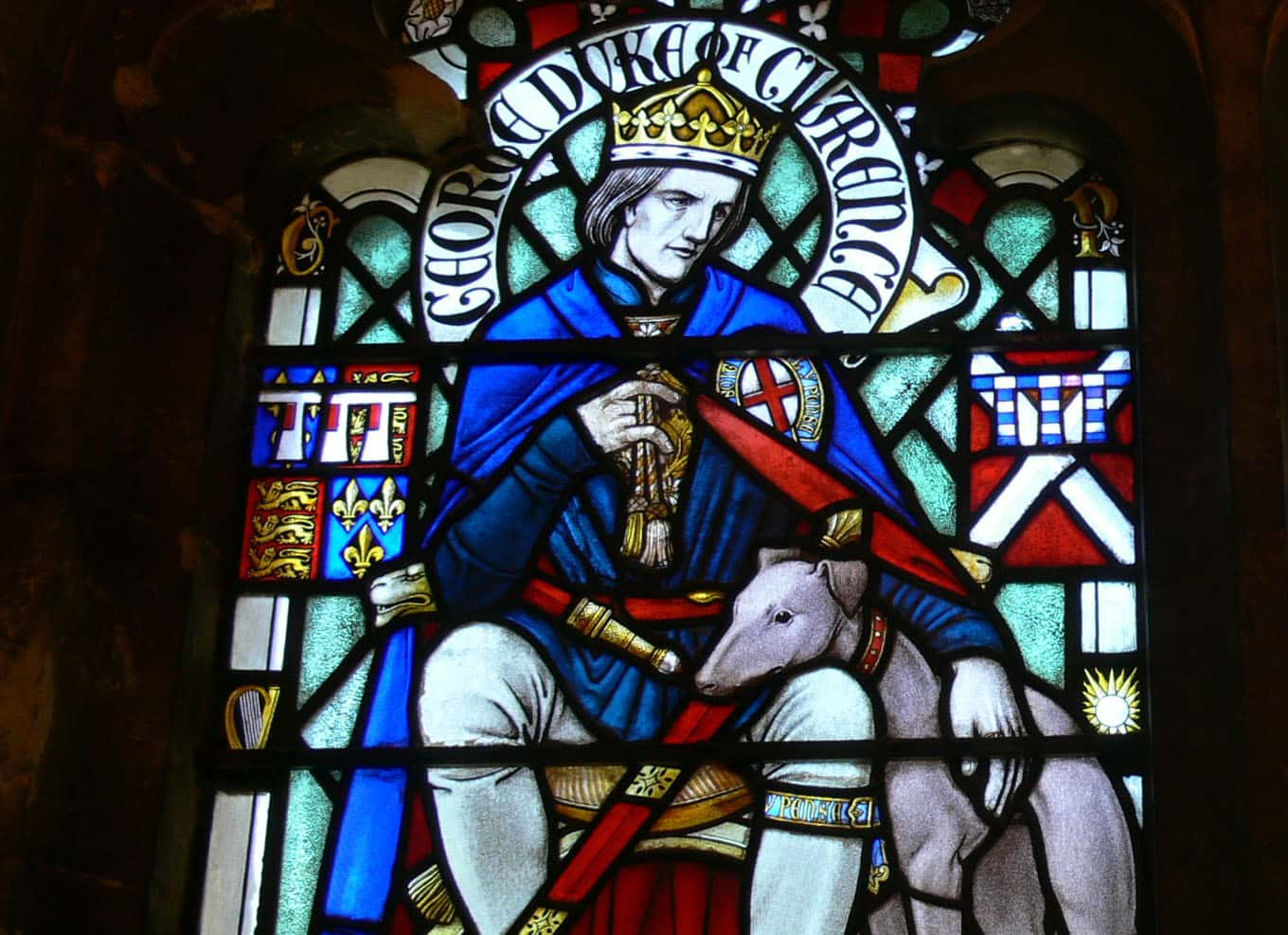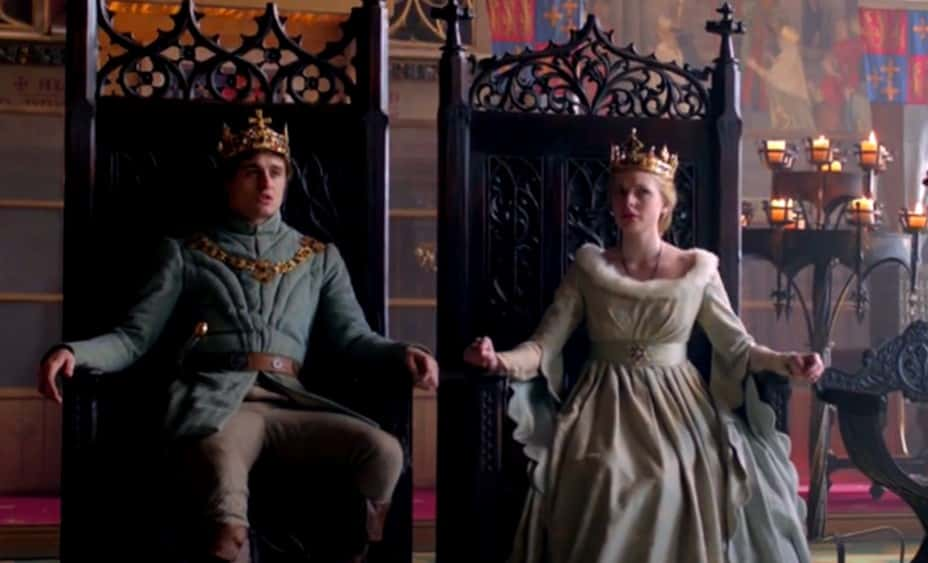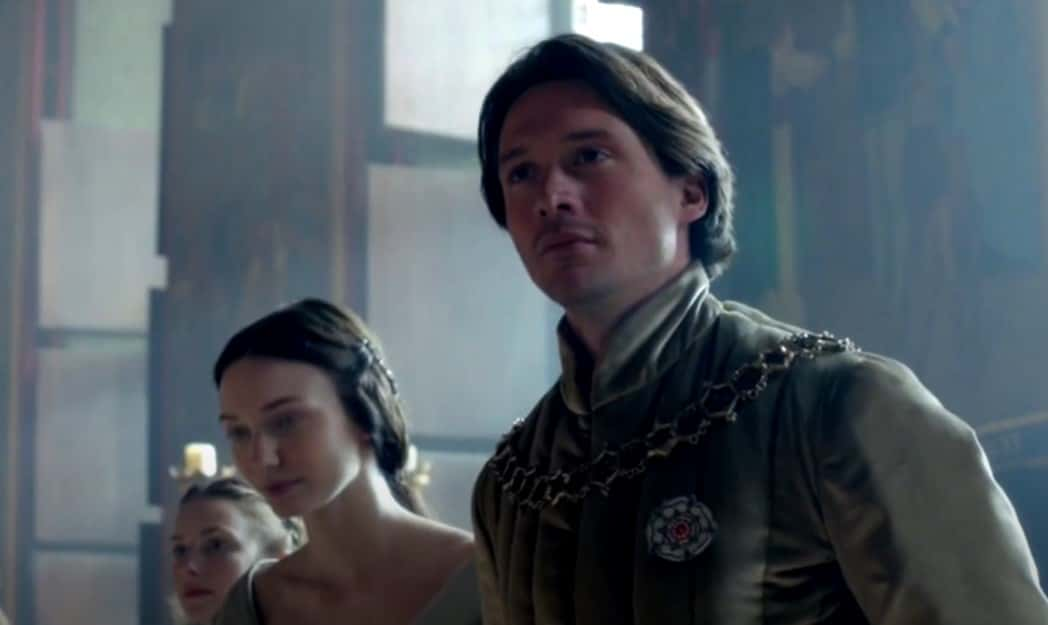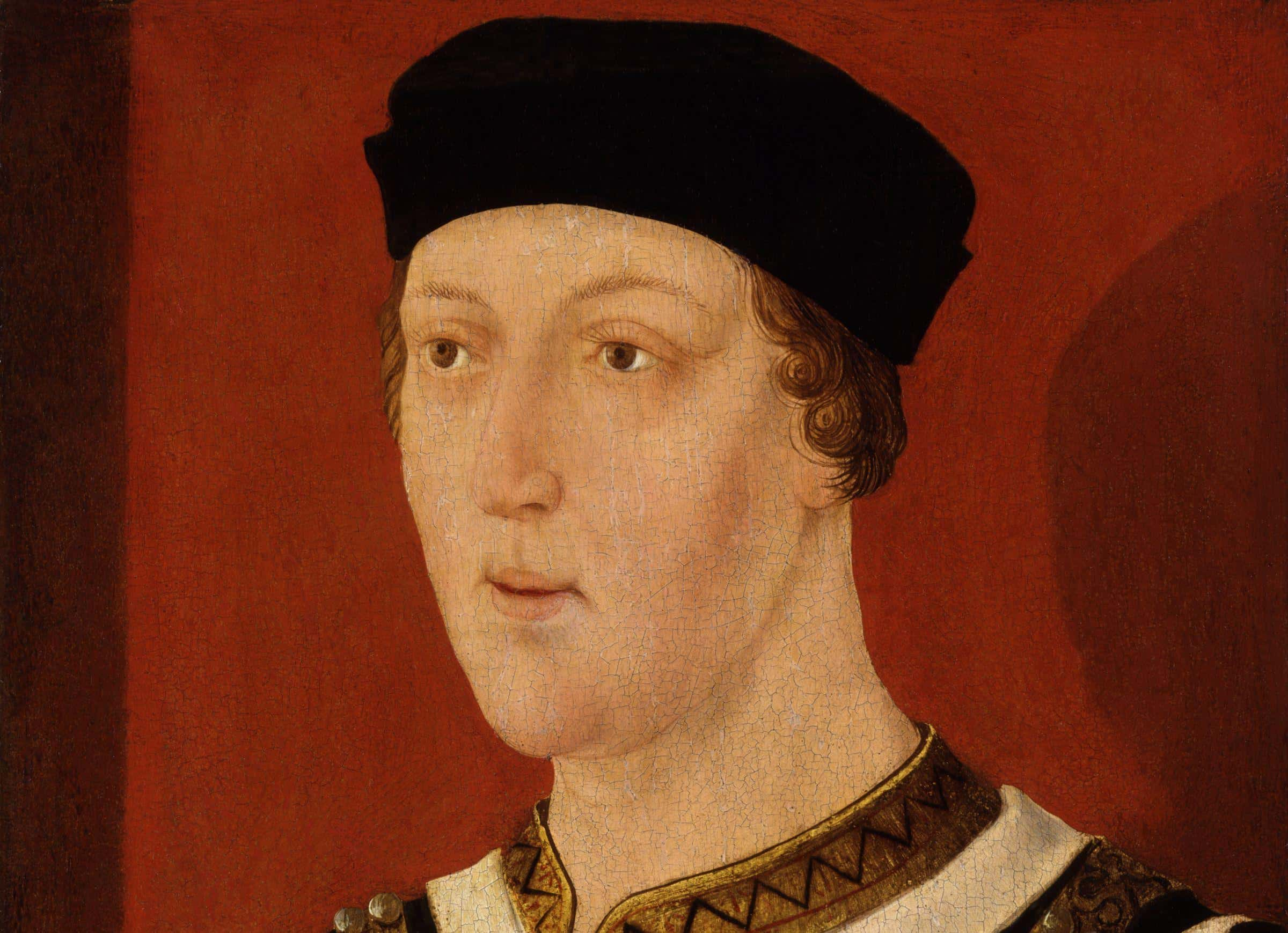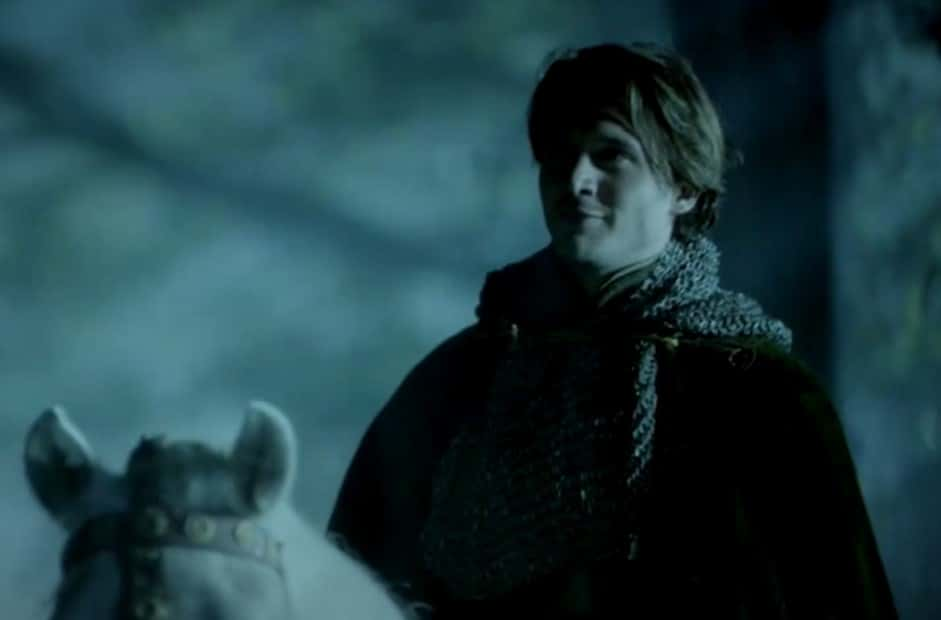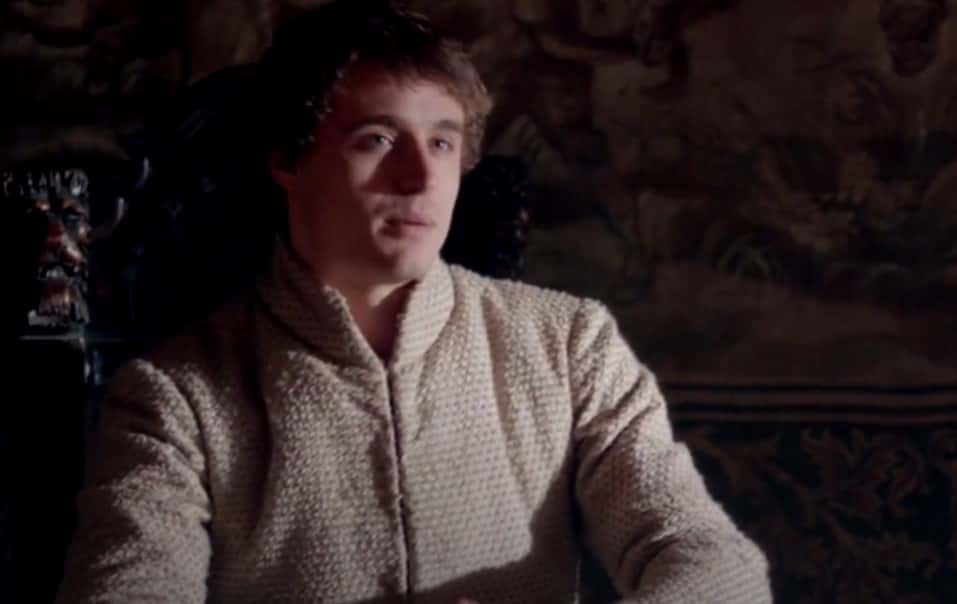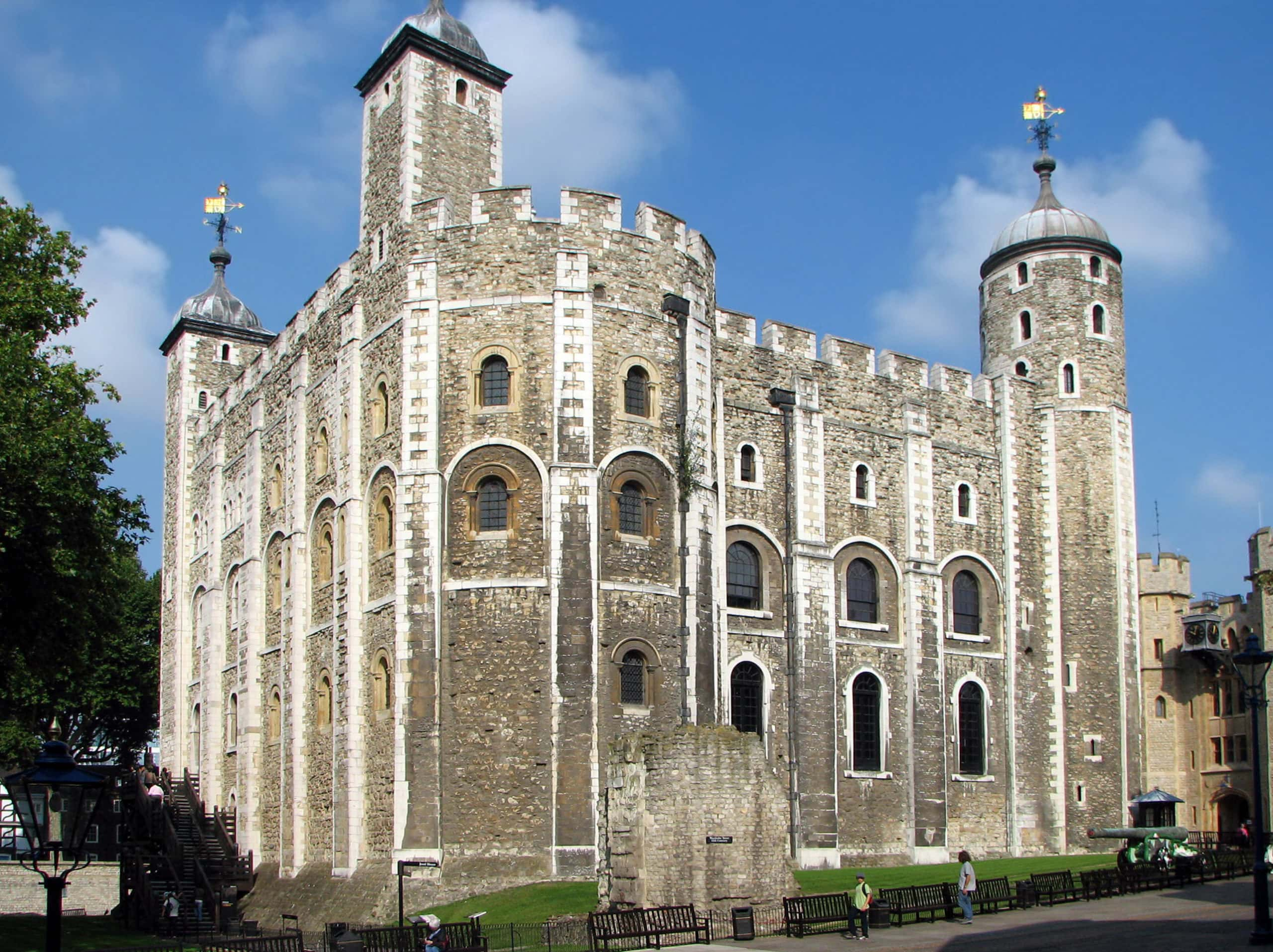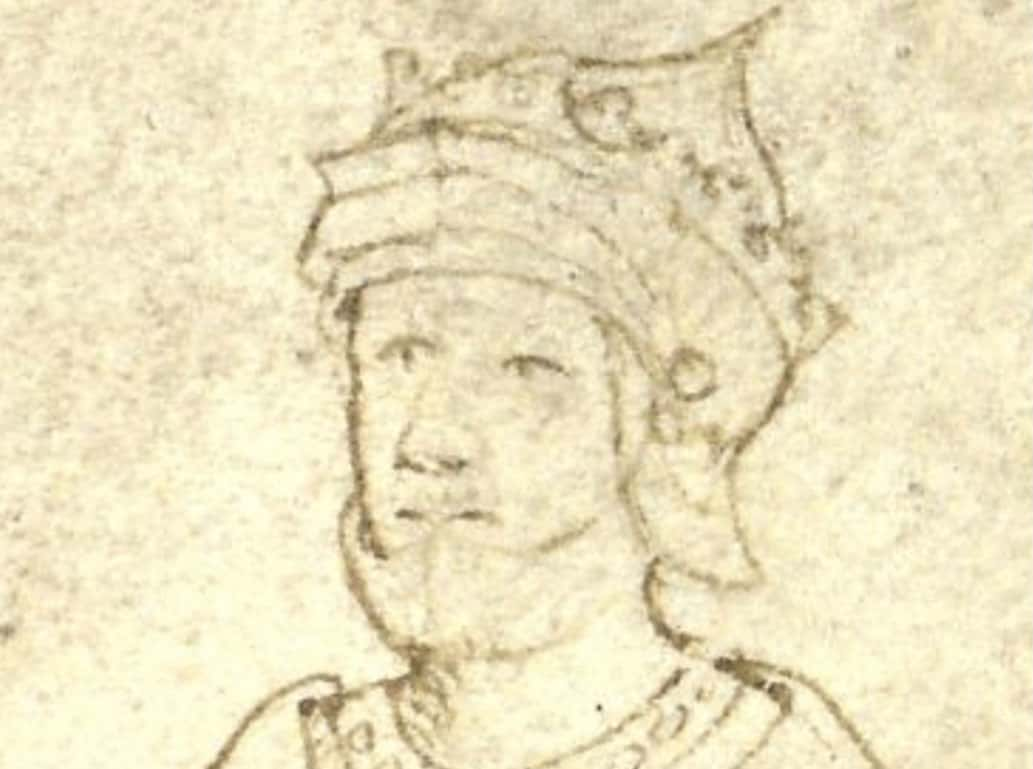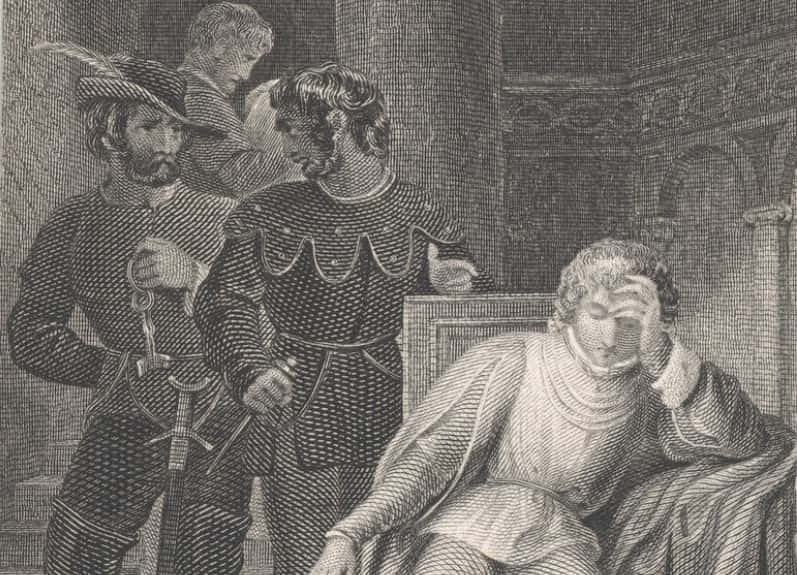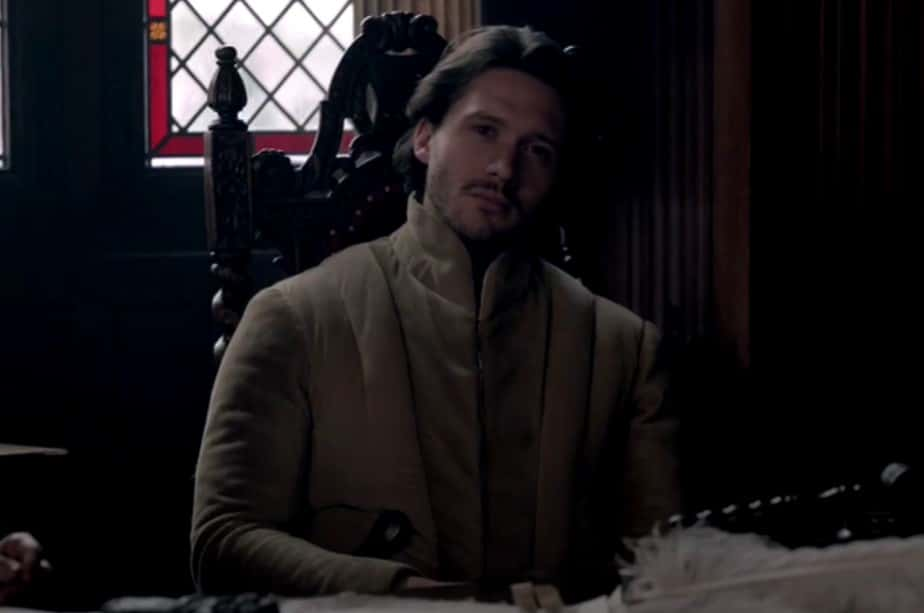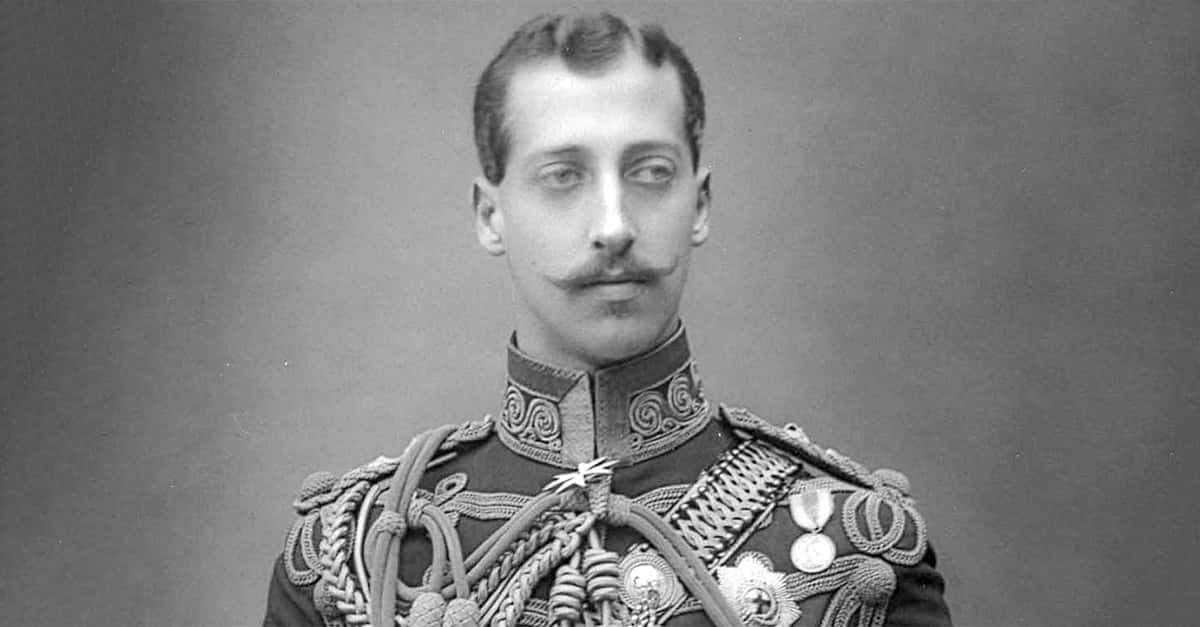Feuding dynasties, family betrayal, power grabs, and treason. This isn’t Game of Thrones—it’s better. This is the real life of George Plantagenet, the Duke of Clarence, the betrayer of brothers, and the almost king. For better and worse, England would never be the same.
1. His Family Is Legendary
On 21 October 1449, Cecily Neville and Richard, 3rd Duke of York’s son George Plantagenet was born with hunger for power coursing through his veins. His dad’s attempts to seize power led to the 30-year Wars of the Roses between the houses of York and Lancaster. George was fated to follow in his father's footsteps—but that was an incredibly dark path to tread.
2. He Experienced Tragedy Early
Richard of York’s bet didn’t pay off, and his whole family paid the price for his ambitions. In December 1460, at the Battle of Wakefield, the House of Lancaster ended his efforts to seize the throne–along with his and his son Edmund’s lives. They even mockingly placed a paper crown on Richard’s lifeless head and paraded it in public.
Upon hearing the grim news, George and Richard, the younger of the York sons, fled to France for safety. There, George was safe, but he certainly wasn’t sound.
 The Hollow Crown (2012–2016), BBC
The Hollow Crown (2012–2016), BBC
3. He Became A Refugee
Going from essentially a prince to a pauper was always going to suck, but doing it at 11 years old makes it so much worse. George’s riches to refugee experience left invisible, but permanent scars: He saw how unpredictable and unstable life was. George realized he needed to look after number one. He could never shake off this insatiable thirst—even after his fortunes dramatically changed.
4. His Brother Became King
In February 1461, the Plantagenets received the best news of their lives: The battle was over, and this time, they were on the winning side. Edward, Earl of March (and George’s oldest brother) became King Edward IV after avenging his father and defeating the Lancasters. Did the Plantagenets live happily ever after? Of course not: Even more drama was in store.
5. He Benefited From Nepotism
It’s all about who you know–or who you’re related to. Soon after seizing power, King Edward IV made George the Duke of Clarence and the Lord Lieutenant of Ireland. Did George have any accomplishments or skills to justify this? No; he was only 12 years old. It helps to have brothers in the highest places. But King Edward IV didn’t do it out of the goodness of his heart.
6. He Had A Generous Brother
Edward spoiled brothers George and Richard with titles, land, and power–but he had ulterior motives. Edward recognized George’s hunger for power and wanted to cultivate it in his favor. Keeping power within the family was a no-brainer. But he failed to recognize the darkness and depravity in his brother. Edward soon ended up regretting his generosity.
7. He Had A Massive Ego
At 12 years old, George had already lived 12 lives. He’d gone from riches to rags to riches. He’d experienced the worst, and came out on top as England’s second-highest-ranked noble. More importantly, Edward was single, which made George the heir to the throne. This reversal of fortunes gave George an inflated ego and the belief he could do anything.
But underneath this arrogance, he couldn’t shake off the demons of the past.
8. He Was Insecure
The ghosts of the past haunted the Plantagenet brothers. And who could blame them? Edward, Richard, and George all faced so much conflict, tragedy, and loss. But it led to the inescapable paranoia that they could lose everything—again. This anxiety dictated their choices, relationships, and views. Tragically, they’d take it out on each other. And no one did it more viciously than George.
9. He Resented His Brother
Daddy issues? Mommy issues? George had brother issues. He hardly saw Edward growing up; they were almost strangers. This almost nonexistent brotherly bond, along with George’s relentless ambition, was the perfect recipe for trouble. Even though Edward made George his right hand, the younger Plantagenet couldn’t accept he wasn’t number one.
George’s resentment of his brother (and boss) only needed a spark to explode.

Sign up to our newsletter.
History’s most fascinating stories and darkest secrets, delivered to your inbox daily. Making distraction rewarding since 2017.
10. He Hated His New Sister
George and Edward’s strained relationship went past the point of return when the King married Elizabeth Woodville in 1464. Any children Elizabeth had would automatically replace George as the heir. He looked into the future, and only saw decreasing power and rank. Basically, it was the end of the world for someone like George. What Edward did next made everything so much worse.
11. He Hated His In-Laws
The Woodvilles were social climbers and gold diggers. Since Elizabeth Woodville was now Queen Elizabeth, Edward lavished the family with prestigious titles and upward mobility. But his biological family—and all the other established nobles—were furious at the King and his chosen family upstarts. This time, George wasn’t alone in his fury.
He realized Richard Neville, their cousin and the Earl of Warwick, wasn’t just angry. He was plotting.
12. He Found His Puppetmaster
To the Plantagenet brothers, Neville was so much more than a cousin or an earl: He was their powerful (and manipulative) mentor. He didn’t get the nickname "The Kingmaker" by playing nice. Neville realized that George wasn’t just mad at the King—he was scared. Edward could easily take George's titles, land, and money away from him. For Neville, that meant one thing: Jackpot.
13. He Was A Gold Digger
Once Neville planted the seeds in George’s mind, they quickly took root. The Earl's daughter, Isabel Neville, was an heiress whose riches remained independent from the King. If George married her, this wealth would be his. Marriage was a no-brainer. The only thing left to do was get Edward’s permission–but George left their conversation hating his brother even more than before.
14. His Brother Had Other Plans
Having to ask your brother for permission to marry is already degrading, but your brother saying no is so much worse. Edward prohibited George from marrying Isabel and acquiring independent wealth. Edward liked his brother under his thumb. This wasn’t even the first time Edward meddled in George’s love life and ambitions, either.
There’s only so much strain a brotherly relationship can withstand before snapping beyond repair.
15. His Brother Ruined Everything
Turns out, George was also a potential husband for Mary of Burgundy. Both women were beautiful. But more importantly, they both sat on mountains of gold. Marrying Mary or Isabel would’ve given George what he lusted for: wealth and power that didn’t rely on Edward’s good graces. Naturally, the King ruined it for him and prevented both unions. This time, George had enough.
16. He Had A Secret Wedding
While George fumed, Neville realized that he'd lost control over Edward. The Kingmaker needed to shift gears, and he knew George was the perfect tool to make another king. But first, he needed to tie George to him. So, Neville encouraged George's defiance of his brother's order. On July 11, 1469, George and Isabel secretly married. It was the start of a marriage—and a mutiny.
17. He Betrayed His Family
Nothing brings a new family together quite like treason. Right after his wedding, George joined Neville in his attempt to overthrow Edward. Their plotting reached villainous levels after they formed an unthinkable secret alliance. The King’s brother and cousin (and fellow members of the House of York) teamed up with the Lancasters: the family they’d feuded with for decades, and the ones responsible for beheading George’s dad. Oh boy, here we go.
18. He Got Caught
George and Neville didn’t just scheme and form alliances; they even supported an armed uprising. While the pair tried to move in secret, Edward eventually found out. It was a double betrayal to Edward, as a king and a brother. He didn’t exactly take it well. Fearing for their lives, the duplicitous duo fled to France to escape his wrath. But George and Neville weren’t done yet.
19. He Won
Months later, George and Neville returned to England to have a second go. This time, with the help of the former queen, Margaret of Anjou, Neville successfully ousted Edward and forced him into exile. He then gave the previous king, Henry VI, the throne back. But here's the thing about Henry VI—he wasn't exactly right in the head. That was going to be a problem for George and his new alliance.
20. He Was Almost King
If this mutiny was going to work out, they needed a strong king—and that wasn't happening with Henry VI. After Edward ousted him, Henry spent years hiding, only to be caught and held captive by the Yorks. Infamous for his mental instability even before he lost the throne, the man that George freed from the Tower of London was all but useless.
George and Neville ended up ruling in his name. It was the closest George ever got to being king—but Henry lasted not even six months before George realized he made a horrible mistake.
21. He Realized His Mistake
It didn’t take long for George to realize that he sided with the wrong guy. While Neville was the Kingmaker, he had no desire to make George king. He was nothing more than a pawn and tool to his ruthless cousin. So George went with his signature move: betrayal.
22. He Double Crossed
Edward and George secretly wrote to each other. The exiled former king promised to forgive and forget if his younger brother abandoned Neville and the Lancastrians. George agreed and joined Edward’s battle for the throne. In 1471, Edward returned to England after successfully recovering his throne and relationship with George. Geroge was back on solid ground, while his in-laws faced dire consequences.
23. He Deserted His In-Laws
I challenge you to name a more perfect pair than George and betrayal. He abandoned his allies–which included his wife’s family–at the worst possible time. In a single battle, Edward offed Richard Neville and his son (George's father- and brother-in-law for anyone who's lost track). The rebellion was officially dead. George's in-laws and former allies paid the ultimate price for their treachery, while he got off scot-free.
But don't worry: Before long, fate would deal George the darkest hand of all.
24. He Got Away With It
Thanks to a well-timed desertion and family connections, George got away with treason of the highest order. That didn’t help his ego and sense of invincibility. It didn’t help that he ended up benefitting from his betrayal. You see, Edward made George the Earl of Warwick and Salisbury afterward. But if we've learned anything about George Plantagenet, it's this: He couldn't help but ruin a good thing.
25. He Blocked His Brother
How the tables turned: This time, George felt betrayed by a different brother. He discovered his younger brother, Richard of Gloucester, wanted to marry Anne Neville, his sister-in-law. If that happened, George feared Richard could grab a piece the Neville (his) fortune. He desperately tried to prevent the union. He even disguised Anne as a maid and sent her away.
But once again, Edward foiled his plans by giving Richard and Anne his blessing to marry. Let the drama begin...again.
26. He Lost His Wife
Losing your wife was always going to be devastating, but losing them young and unexpectedly makes it so much worse. Unfortunately, George found out the hard way. On December 22, 1476, Isabel passed at only 25 years old. It was also only two and a half months after she gave birth to their son. Her passing was a complete shock and mystery. It didn’t take long for life to throw another tragedy at George.
27. He Faced Loss Again
On January 1, 1477, George lost his infant son. In just a few weeks, he’d lost his wife and baby. There’s only so much loss a man can take. The already paranoid George didn’t exactly cope well. While the cause of Isabel’s passing was unknown, that didn’t stop George from forming wild conspiracies—that innocent people paid the ultimate price for.
28. He Made A Serious Accusation
George accused Ankarette Twynyho, his wife’s lady-in-waiting, of poisoning her. He then accused John Thurseby and Roger Tocotes, random locals, of complicity. Grief can make people do wild things, but most people don’t have George’s power. The Duke decided that he had to get justice–or his deranged, grief-stricken version of it–for his deceased wife and son. But he went too far.
29. He Took Advantage Of His Power
The trial was a farce and everyone knew it. But there was nothing they could do after George coerced the jury into siding with him. In April 1477, they found the trio guilty. The executioners hung Ankarette and John, while Roger escaped. It was an appalling example of aristocratic corruption. By the time the King found out, it was too little too late.
30. He Was Wrong
George was in the wrong, and Edward agreed. A year after the sham trial and execution, Edward pardoned Ankarette. Turns out, Isabel likely succumbed to consumption and childbed fever—quite common at the time. Regardless of the cause, George was never the same; his already questionable morals and mental stability disintegrated. It was the beginning of the end.
31. His Brother Interfered (Again)
After Isabel’s passing, George wanted to marry Mary of Burgundy, his old flame. But once again, Edward rejected the union. This was at least the third time Edward interfered with George’s matches. It was three times too many. He ended up storming out of the royal court. George wasn’t going to just take this lying down: He wanted revenge and knew exactly how to trigger Edward.
32. He Slandered The King
Like any younger sibling, George knew exactly which buttons to push. He fed the rumors that Edward was the illegitimate child of their mother and an archer. This wasn’t just embarrassing; such rumors could be extremely dangerous for a usurper king like Edward. But George wasn’t done. He then spread rumors that Edward and Elizabeth’s marriage was invalid. The King had had enough, so he sent his little brother a clear warning.
33. He Received A Warning
Corruption runs in the family: Edward followed George’s footsteps into flagrant abuses of power. The King took three of the Duke’s men into custody. There, he physically forced them to confess to wrongdoings. Edward tried and convicted the trio for treason. Two were executed. This was a clear warning to stop this madness. Unsurprisingly, George completely ignored the message. If anything, he became even worse.
34. He Ignored The Warnings
George convinced a retainer, John Goddard, to burst into Parliament and loudly declare the innocence of his men. Interrupting Parliament and disagreeing with the King was already offensive, but George’s choice of speaker pushed Edward over the edge. You see, Goddard used to be a Lancastrian who supported Henry. Yikes. Edward put up with a lot, but this time, George pushed him over the edge.
35. He Took It Too Far
Despite being on thin ice with his brother, George still solicited oaths of allegiance and planned another rebellion. This time Edward couldn’t forgive and forget. The King not only berated George this time: He lobbed accusations of treason. Edward detained him in the Tower of London until the trial. George messed around and was about to find out.
36. He Was A Bad Brother
Edward asked Parliament to pass a bill of attainder (basically a declaration of someone’s guilt and punishment that doesn’t require a trial). The King felt the bill of attainder was justified due to the egregiousness of George's actions. After all, this wasn’t just any old rebel. He was the King’s brother. Parliament agreed. Justice was heading George’s way.
37. His Brother Was Torn
George languished in the Tower of London for months as Edward agonized over what to do. This wasn’t some petty disagreement between siblings: George plotted against and undermined Edward for years. The mere fact of George’s continued existence challenged his rule. Edward had tried to forgive and forget before, but he’d had enough. No more.
38. He Was Executed
On 18 February 1478, George was executed for treason. He was 28 years old. Edward opted for a private execution: He either wanted to preserve George’s dignity or just protect the family’s reputation. But the secrecy had unintended and lasting consequences. Due to the mystery surrounding the execution, strange rumors spread like wildfire.
39. His Execution Sparked Strange Rumors
The typical execution method for nobility was beheading. Since George’s execution was secret, it’s unclear whether Edward followed tradition. There is a rumor–that lives on today–that they didn’t behead George. Rather, many believe Edward opted for a far more disturbing method: drowning in a barrel of wine. The truth remained a mystery for centuries—until a startling discovery.
40. The Rumors Could Be True
Remains believed to be George’s were later exhumed. What they uncovered was shocking: His alleged body showed no signs of beheading. It was intact. Basically, the rumor that George drowned in wine might not be that far-fetched. Sometimes, reality is stranger than fiction.
41. His Children Paid The Price
George’s story–and sins–didn’t pass with him. Tragically, they stuck around to haunt his two surviving children. On 27 May 1541, Henry VIII executed George’s daughter Margaret, Countess of Salisbury and one of the last Plantagenets. She was 70 years old. Margaret’s crime? Being too close to the throne and having an overly paranoid king.
Margaret refused to lay her head on the block. She insisted, until her very last breath, that she was “no traitor”. Tragically, her son and brother suffered similar ends.
 The Tudors (2007–2010), Showtime Networks
The Tudors (2007–2010), Showtime Networks
42. His Actions Were Unforgettable
George’s youngest, Edward Plantagenet, 17th Earl of Warwick, was the last direct Plantagenet heir. The wealth, titles, and influence he acquired as a kid made King Henry VII nervous. George’s lifelong love affair with treason added more fuel to the fire. When Henry became king in 1485, he quickly went after the last remaining Plantagenet.
 The White Princess (2017), Starz!
The White Princess (2017), Starz!
43. His Son Followed His Footsteps
Henry kept Edward as a prisoner in the Tower of London–the very same place where his father had languished at the end. The 10-year-old’s only crime was inheriting too much and having a notorious father. The paranoid king didn’t care. Henry imprisoned the poor kid there for most of his life. This had devastating consequences for Edward, the Plantagenet family, and England.
44. His Son Struggled
Imprisonment and isolation in the notorious Tower of London during the 15th century wasn’t fun for anyone–but especially children. Historians speculate that Edward’s environment was so harmful, he developed disabilities. An observer even noted his isolation from "all company of men, and sight of beasts, in so much that he could not discern a goose from a capon".
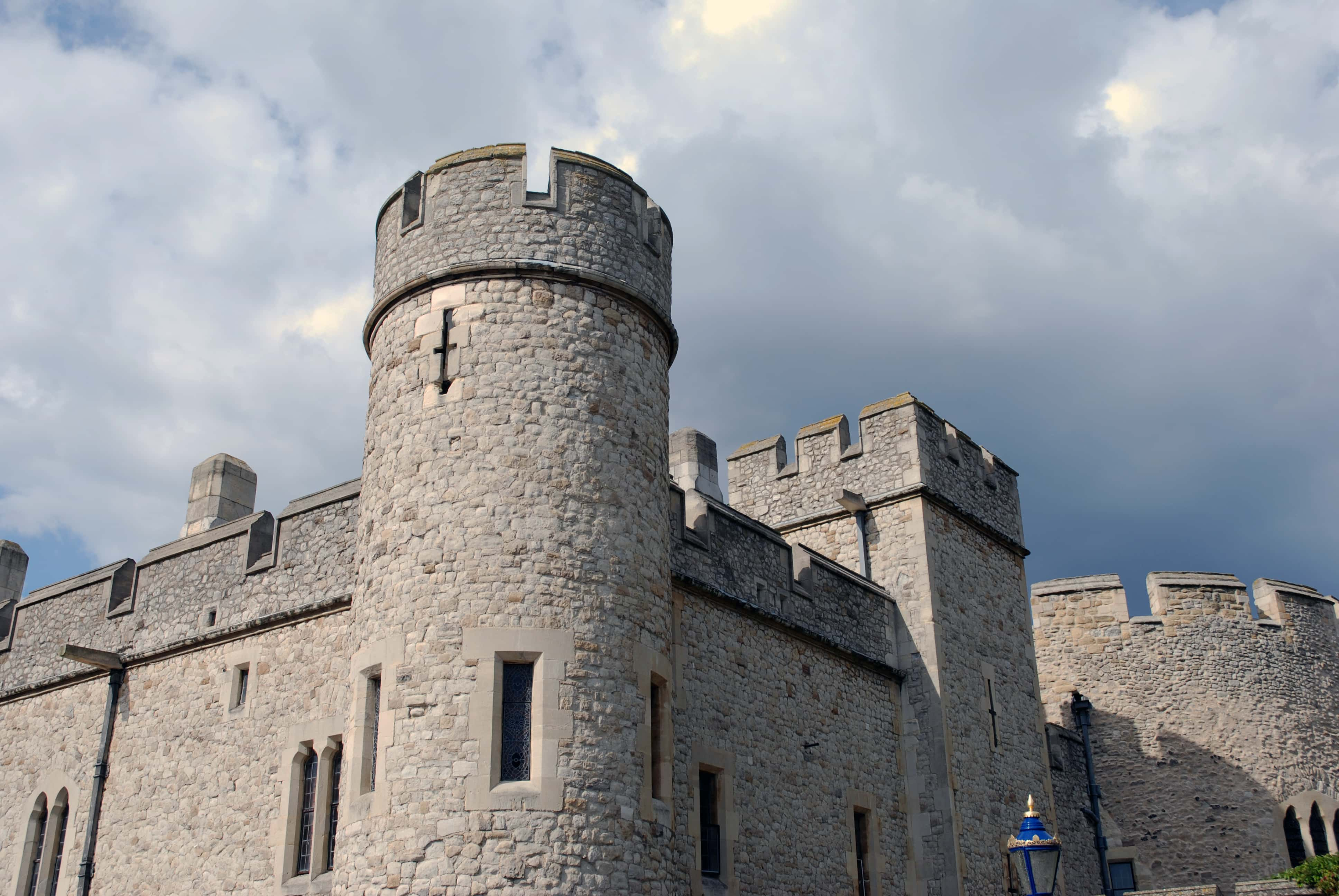 Wikimedia Commons, allen watkin
Wikimedia Commons, allen watkin
45. His Son Tried To Get Out
From 1485 to 1499, Edward remained a prisoner in the Tower of London. At 24 years old, George’s son finally attempted an escape with Perkin Warbeck, an infamous pretender to the throne. No one knows whether Edward was a willing participant. There’s the possibility that the strong-willed Warbeck coerced him, which makes what happened next even more tragic.
 The White Princess (2017), Starz!
The White Princess (2017), Starz!
46. His Dynasty Ended
Caught red-handed, Henry VII sent Edward sent straight back to prison, but he didn't stay there long. The King finally had an excuse to eliminate this potential challenger for the throne, so he executed Edward. This time, they stuck to the aristocratic tradition of beheading. Just like that, the House of Plantagenet’s male line was no more. It was the end of a centuries-old dramatic dynasty that was everything except boring.
 The White Princess (2017), Starz!
The White Princess (2017), Starz!
47. Shakespeare Immortalized Him
It was always going to be hard for history to forget the Duke who betrayed his King brother over and over again, but Shakespeare ensured it would not happen. The writer immortalized George in not one, but two plays: Henry VI, Part 3 and Richard III. I want to say that’s an honor, but his characterization wasn’t exactly flattering in either play.
48. He Got An Unflattering Portrayal
Shakespeare portrayed George as weak, spineless, and disloyal. His character talked big about loyalty, but switched sides like changing clothes. His character also liked drinking a little too much. Basically, it was a really negative depiction. Hey, if the shoe fits…But Shakespeare didn’t help his seriously damaged legacy. Was George’s title damaged beyond repair?
49. He Brought Shame To His Title
George held the Duke of Clarence title for less than two decades before screwing up. He also holds the dubious accomplishment of tainting the title forever. George’s legacy was so dark that the title seemed untouchable. The next Duke of Clarence wouldn’t come along for another 300 years–but it didn’t take long for things to go sideways again.
50. His Successor Messed Up
In 1892, Prince Albert Victor became the Duke of Clarence. He had…interesting shoes to fill—and boy did he fill them! Albert followed his predecessor’s footsteps by becoming embroiled in scandals. Let’s just say one involved a male brothel. Albert topped that controversy with an even bigger one: People suspected he was Jack the Ripper. To no one’s surprise, the Duke of Clarence remains an extinct title.


